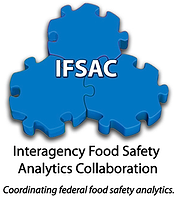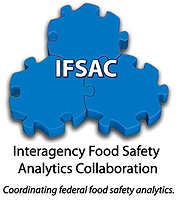The UK’s Food Standards Agency (FSA) has released a new scientific review that includes a new estimate on the number of foodborne illnesses that occur annually in the UK.
FSA now estimates that the UK experiences about 2.4 million cases of foodborne illness each year. That’s up from 1 million illnesses last estimated in 2009.
The new estimate does not imply an increase in total numbers of illness, says FSA, nor does it indicate any new public health risk. Rather, the new number provides “a better estimation of the proportion of infectious intestinal disease that is due to food.” The overall estimate for this type of illness, from all sources, remains the same, at around 18 million cases each year in the UK.
Jointly, FSA has also published a 5-year study into the extent of norovirus in food, along with an FSA paper that reviews and updates the assessment developed during that project.
Overall, FSA new research studies reveal:
- an estimated 380,000 cases of norovirus linked to food occur in the UK per year
- a breakdown of the roles of the main transmission pathways in food suggest eating out accounts for an estimated 37 percent of all foodborne norovirus cases, takeaways (meaning takeout or carryout) at 26 percent, open-headed lettuce on retail sale at 30 percent, raspberries on retail sale at 4 percent, and oysters on retail sale at 3 percent
- the revised foodborne norovirus estimate, combined with better analysis of how many illnesses of unknown cause are also likely to be caused by food, suggest around 2.4 million estimated UK cases of foodborne illness occur each year
“This work gives us a much better idea of the role of food in the spread of all infectious intestinal disease in the UK. However, this does not mean more people are getting unwell, only that we estimate food is responsible for more existing cases than previously thought,” says Professor Guy Poppy, FSA’s chief scientific advisor.
He continues, “Most of this increase is due to innovative new research into foodborne norovirus. As part of this, sampling surveys focused on the five most common food-related transmission routes. Although the percentages may appear striking, the risk to consumers remains very low for most of these pathways. For example, on average, an individual would only end up with norovirus once in every 15,000 portions of open-headed lettuce – that would take around 40 years. Oysters pose the highest risk per serving, with illness likely on average once in around 160 servings.
'We are not changing our advice to consumers and businesses. Instead, this research reinforces the need for the highest standards of good personal and food hygiene practices in catering establishments and at home to avoid infection.”
'Estimating the contribution of norovirus to the burden of UK foodborne disease has been particularly difficult up until now. This is largely due to people not attending doctors’ surgeries when they are unwell with symptoms of the winter vomiting bug. And whilst helpful in preventing the spread of the virus and alleviating the strain on healthcare settings, it does mean that crucial information about the virus cannot be collected. This is why the development of the first risk assessment of this type for the UK is particularly significant.” says Professor Sarah J. O’Brien, lead Norovirus Attribution Study researcher.
The FSA can now use this new and improved understanding of the significance of foodborne disease to inform future efforts to control and reduce the risk of infection posed to the public from food by all pathogens.




